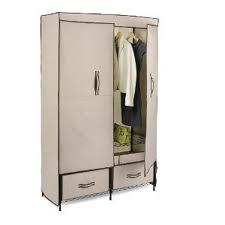Off Season Clothing Storage

26 Apr 2013
Now is the time of year to bring out your spring clothing and put away all those bulky winter duds. When storing your off-season clothing, follow these practical guidelines to avoid damage from insects, mildew and mold.
Important
Be sure to wash and dry all garments thoroughly before storing.
Do not store clothes in plastic bags or airtight containers. Rattan trunks are perfect for storing clothing, as they allow the clothing to breathe when air circulates through the rattan.
Clothing Storage Tips
When storing garments, use a chemical desiccant to absorb moisture and prevent mildew. Do not let the desiccant touch the garments. Examples of chemical desiccant are calcium chloride or silica gel.
Also you can use cedar balls or blocks to repel insects
Reduce dampness in closets by tying pieces of chalk together and hanging them from a support post or from the ceiling.
If the weather in your area is cool and dry, be sure your storage areas are well ventilated.
Always store garments loosely so they can breathe and air can circulate. Never use fabric finish or starch on garments that are to be stored.
Protect clothing from wood acid by lining dresser drawers with an acid free shelf paper or quilted fabric. Never use wallpaper remnants or gummed shelf paper. The backing will attract insects to your clothing.
Always clean garments that are to be stored. Insects are attracted to drink, food and perspiration.
Areas where garments are stored should be dark and clean. Light fades colors and attracts insects.
Never store clothing in a cold basement or hot attic. Extreme temperatures will damage your clothes.
Cotton, linen, silk and wool are all natural fibers. Always store these in a well ventilated area.
To rid garments of wrinkles when they come out of storage, put them in the dryer on the fluff or air dry cycle that has no heat.
When adding mothballs to a storage area, place them in an old sock so they don’t touch the garments.
If you’re using moth crystals, put them on the adhesive backing of duct tape and hang them in the storage area.
Use the tips in this article to safely store all of your off-season clothing. Storing garments correctly will help your clothing to stay beautiful for years to come.
